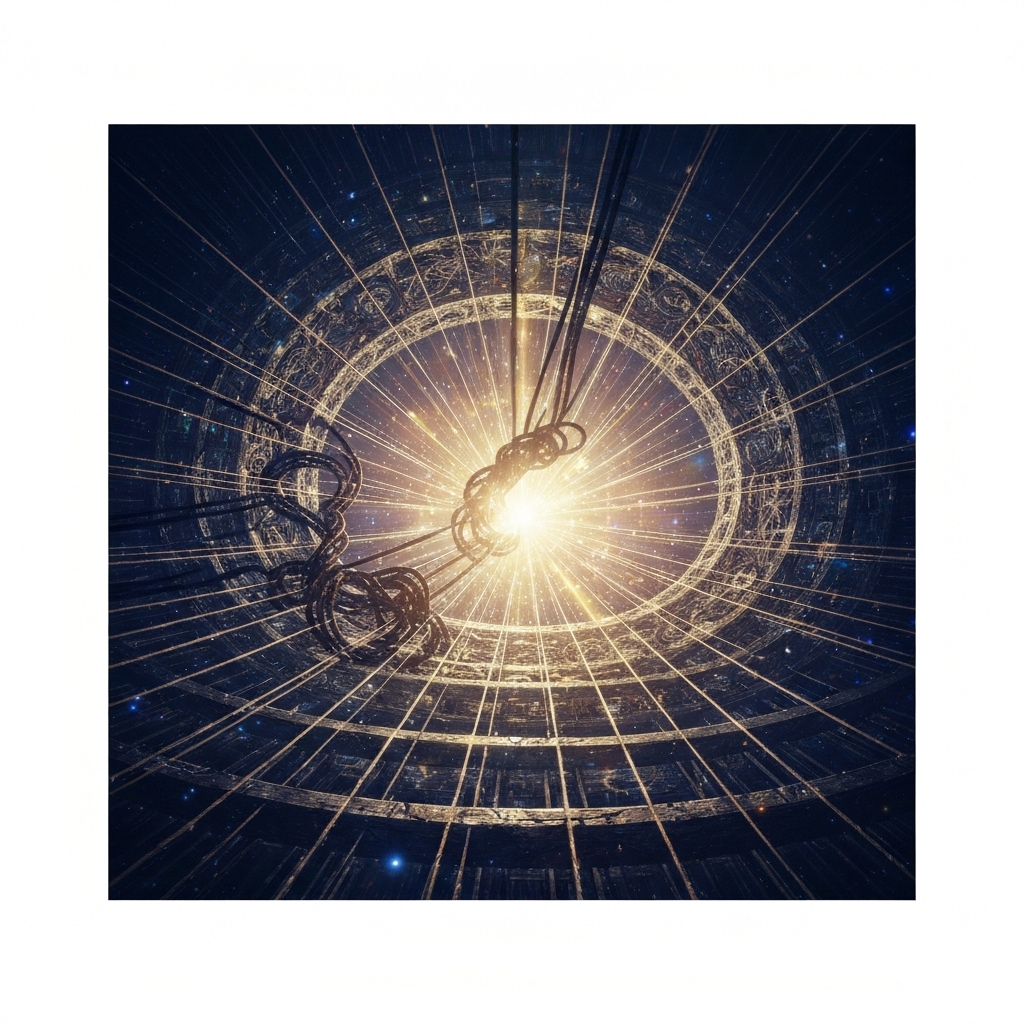
Thesis: Suffering is not a punishment from God but a consequence of attachment to impermanent outcomes.
The Question That Haunts Humanity
“Why does a loving God allow pain and suffering?”
From a Vedic lens, the question is slightly misframed. The Gita shifts focus from a deity “dispensing” experiences to how our consciousness relates to an impermanent world.
How Suffering Starts: The Chain from Thought to Fall
The Gita maps a precise inner sequence.
Gita 2.62 — saṅgāt sañjāyate kāmaḥ
“From attachment, desire arises.” We first dwell on sense-objects; that dwelling becomes attachment (saṅga).
Gita 2.63 — kāmāt krodho ’bhijāyate… smṛti-vibhramaḥ buddhi-nāśaḥ
“From desire comes anger… then delusion; memory confuses; intelligence is lost.”
Blocked desire breeds krodha (anger), which clouds memory and discernment; actions taken in that fog produce suffering.
The spiral begins not with objects, but with clinging to outcomes.
Why Worldly Pleasures Can Hurt Later
Gita 5.22 — ye hi saṃsparśa-jā bhogā duḥkha-yonaya eva te
“Pleasures born of contact with the senses are indeed wombs of sorrow.”
They begin and end. Attachment to them guarantees anxiety (fear of loss) or grief (after loss). The wise enjoy skillfully without clinging.
Quick summary
- Contact-based pleasure ≠ lasting fulfillment
- Clinging → fear/anger → unwise action → suffering
- The fix isn’t withdrawal from life, but refining how we act
The Cure: Action Without Attachment (Karma Yoga)
Gita 2.48 — yoga-sthaḥ kuru karmāṇi… samatvaṃ yoga ucyate
“Established in yoga, perform action… even-mindedness is called yoga.”
What this looks like in daily life
- Do your duty well (skill, diligence, compassion).
- Offer the result (success or failure) to a higher purpose.
- Stay even-minded; learn quickly when outcomes differ from plans.
This breaks the link between outcome and identity. Success doesn’t inflate; failure doesn’t devastate. The result is inner stability.
Aren’t There Other Causes—Like Ignorance or the Kleśas?
Texts speak of avidyā (misapprehension of the Self) and kleśas (afflictions) such as attachment (rāga) and aversion (dveṣa). In practice, attachment is the lever we can move today: by loosening clinging in concrete situations, we weaken the kleśas and clear the mind to recognize the Self (Ātman).
A Compassionate Note
Saying “attachment causes suffering” does not blame victims. Vedic ethics still demand karuṇā (compassion) and action to relieve others’ pain. Karma Yoga is precisely the path of engaged, intelligent help—without burning out in expectation or despair.
Try This 7-Day Micro-Practice
- Day 1–2: Notice one recurring attachment (e.g., praise, metrics, convenience). Simply name it whenever it appears.
- Day 3–4: Before a key task, state your dharma-based intention in one line; after the task, write two learnings—no self-judgment.
- Day 5–7: Pick one outcome you can’t fully control. Practice offering the result (mentally or in writing) and returning attention to the next right action.
Measure progress by steadiness and clarity, not by external wins.
FAQ
Is detachment cold or unloving?
No—detachment in the Gita means non-clinging, not indifference. It enables steadier love.
Do I have to renounce normal life?
No—Karma Yoga is engaged life. The renunciation is of ownership over results, not of responsibility.
How will I know it’s working?
Fewer spikes of anger, faster recovery after setbacks, and a quieter mind while acting.
Bottom line: Natural psychological laws mean clinging to the impermanent creates pain. The Gita offers a precise antidote: act fully, offer the outcome, stay even-minded. That stance reveals the freedom of the Ātman, even while life stays beautifully busy.